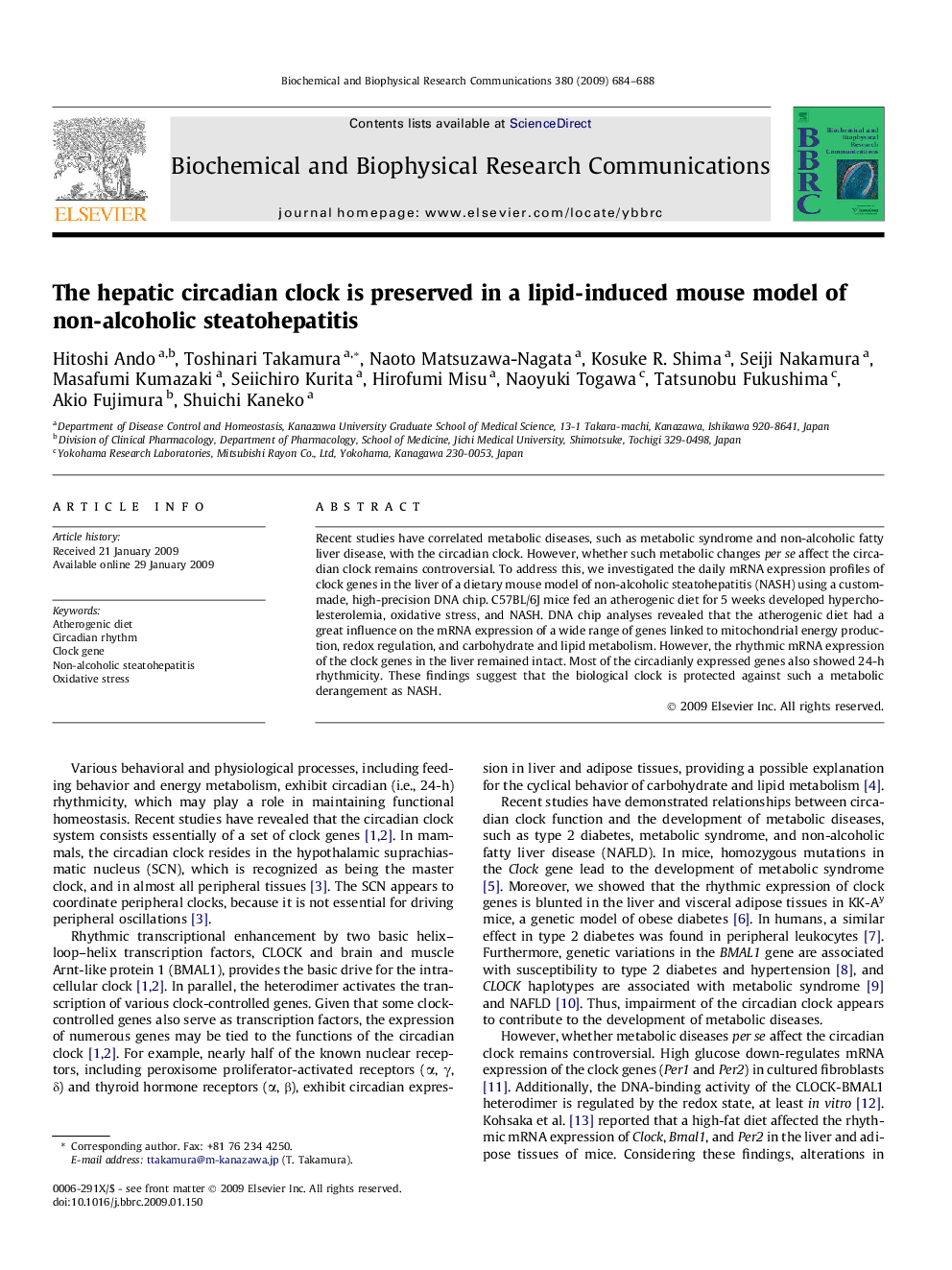| کد مقاله | کد نشریه | سال انتشار | مقاله انگلیسی | نسخه تمام متن |
|---|---|---|---|---|
| 1933923 | 1050629 | 2009 | 5 صفحه PDF | دانلود رایگان |

Recent studies have correlated metabolic diseases, such as metabolic syndrome and non-alcoholic fatty liver disease, with the circadian clock. However, whether such metabolic changes per se affect the circadian clock remains controversial. To address this, we investigated the daily mRNA expression profiles of clock genes in the liver of a dietary mouse model of non-alcoholic steatohepatitis (NASH) using a custom-made, high-precision DNA chip. C57BL/6J mice fed an atherogenic diet for 5 weeks developed hypercholesterolemia, oxidative stress, and NASH. DNA chip analyses revealed that the atherogenic diet had a great influence on the mRNA expression of a wide range of genes linked to mitochondrial energy production, redox regulation, and carbohydrate and lipid metabolism. However, the rhythmic mRNA expression of the clock genes in the liver remained intact. Most of the circadianly expressed genes also showed 24-h rhythmicity. These findings suggest that the biological clock is protected against such a metabolic derangement as NASH.
Journal: Biochemical and Biophysical Research Communications - Volume 380, Issue 3, 13 March 2009, Pages 684–688